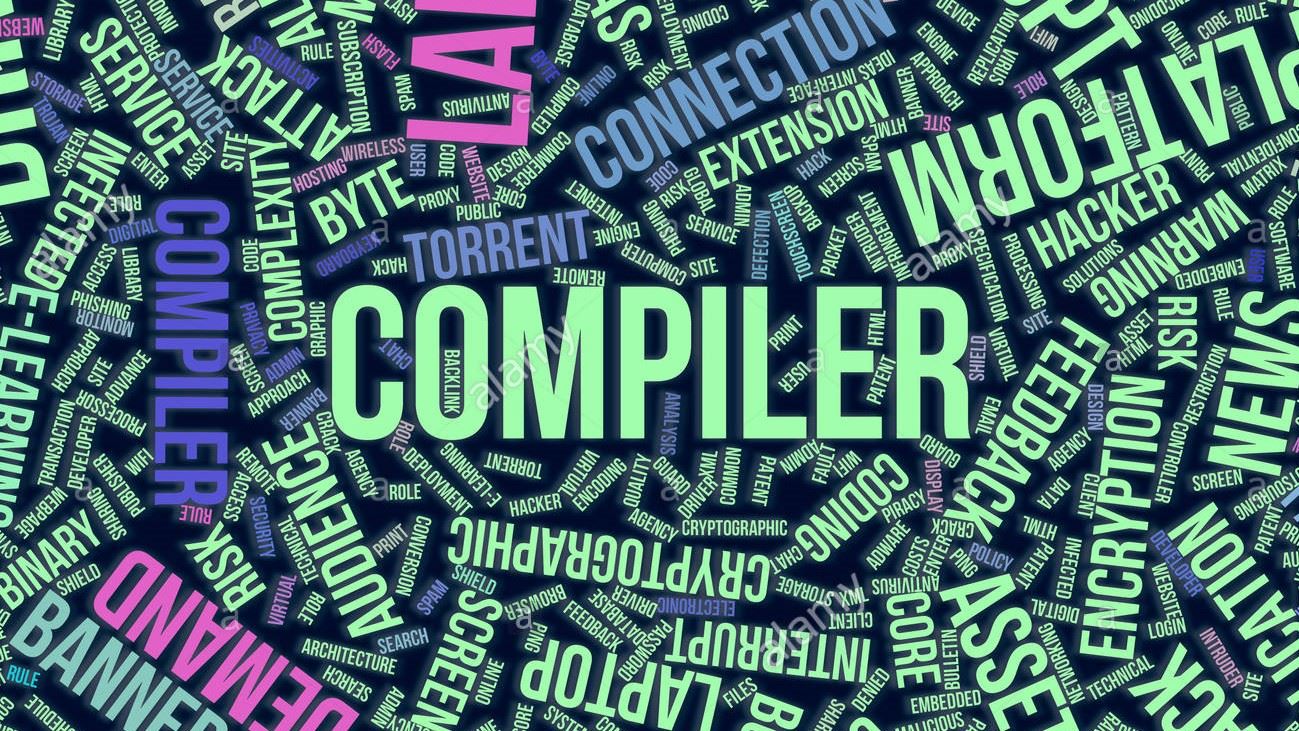COMPILER DESIGN
buX

Reference Textbook: Compilers Principles, Techniques, and Tools (Second Edition) by Aho, Lam, Sethi, and Ullman
Theory Lecture Schedule
Lecture Schedules for the Midterm Exam
Lecture 1: Introduction to Compiler
The Structure and stages of the compiler
The analysis-synthesis model of compilation
Difference between a compiler and an interpreter
Reading References:
- https://betterprogramming.pub/compiler-vs-interpreter-d0a12ca1c1b6?gi=4ace49f83583
- Lesson 1 PDF file shared here
- Chapter 1: Sections 1.2 to 1.5 (Inclusive) of the reference textbook
Lecture 2: Introduction to Lexical Analysis
The role of a Lexical Analyzer
Tokens, Patterns, Token Attributes
Regular Definitions
The Structure of a Generated Lexical-Analyzer
Take-home assignment-1: an assessment of students’ knowledge of regular expression, RE to NFA, then NFA to DFA from Automata and Complexity course
Reading References:
- https://www3.ntu.edu.sg/home/ehchua/programming/howto/Regexe.html
https://cs.lmu.edu/~ray/notes/regex/ - Lesson 2 PDF file shared here
- Chapter 3 Sections 3.1 and 3.3 of the reference textbook
Lecture 3: Direct RE to DFA Construction Part 1
Syntax tree for an augmented regular expression
Computation of FIRSTPOS, FOLLOWPOS, and NULLABLE
Reading References:
- Subsections 3.9.1 to 3.9.4 of Chapter 3 of the reference textbook
Lecture 4: Direct RE to DFA Construction Part 2
RE to direct DFA construction algorithm
Lexical Errors
Reading References:
- Sub section 3.9.5 and 3.1.4 of Chapter 3 of the reference textbook
Lecture 5: Introduction to Syntax Analysis
The role of a parser
Context Free Grammars
Parse Trees and Derivations
Grammar Ambiguity and Mitigation Techniques
Verifying the Language Generated by a grammar
Take-home assignment-2: an assessment of student’s knowledge of context-free grammar, parse trees, and derivations from Automata and Complexity course
Reading References:
- Chapter 4 Section 4.1 and subsection 4.2.1 to 4.2.5 of the reference textbook
- Lesson 5 PDF file shared here
Lecture 6: Introduction to Bottom-up Parsing
Concept of Reductions
Stack simulation example of Bottom-up Parsing
Concept of Shift-reduce Parsing
Handles and Handle Pruning
Reading References:
- Chapter 4 Section 4.5 of the reference textbook
Lecture 7: Introduction to Simple LR Parsing
LR(0) Items
Closure of a LR(0) Item Set
LR(0) Automaton Construction
Reading References:
- Chapter 4 subsection 4.6.1 and 4.6.2 of the reference textbook
Lecture 8: Construction of SLR Parsing Table
FIRST and FOLLOW computation
Generation of SLR Parsing Table from LR(0) automaton and FOLLOW set of non-terminals
Reading References:
- Chapter 4 Subsection 4.4.2 and 4.6.4 of the reference textbook
- Chapter 4 Subsection 4.6.3 (Only the structure of LR parsing table) of the reference textbook
Lecture 9: SLR Parsing Algorithm
Behavior of a SLR Parser
Example of SLR Parsing
Shift-reduce/Reduce-reduce Conflicts and Other Errors in Bottom-up Parsing
Reading References:
- Chapter 4 Subsection 4.6.3 and 4.8.3 of the reference textbook
Lecture 10: Introduction to Syntax-directed Translation
The logic of syntax directed translation
Inherited and Synthesized Attributes
Evaluation of syntax directed definitions
Reading References:
- Lesson 10 PDF file shared here
- From start of the Chapter to Example 5.2 in Page 307 of the reference textbook
- From the start of Section 5.4 to Example 5.11 in Page 318 of the reference textbook
One class equivalent time is reserved for two quizzes before the Midterm exam. If 12 classes can be taken before the midterm, then the other class should be for reviewing so far materials.
Lecture Schedule for the Final Exam
Lecture 11: Dependency Graphs and SDD Types
Dependency Graphs
S-attributed Definitions
L-attributed Definitions
Reading References:
- Section 5.2 from Chapter 5 of the reference text book
Lecture 12: Symbol Table
Importance of Symbol Tables
Scopes in Program and Nesting of Symbol Tables
Important attributes of variables and functions
Reading References:
- Lesson 12 Slides shared here that are prepared by Professor Rich Maclin of the University of Minnesota Duluth
- https://pages.cs.wisc.edu/~fischer/cs536.s08/course.hold/html/NOTES/6.SYMBOL-TABLES.html
Lecture 13: Type Grammar and Attributes of a Type
Type Expression Grammar
Attributes of an Array Type
Grammar for a sequence of variable declarations
Grammar and attributes of Record Types
Reading References:
- Section 5.3.2 of Chapter 5 and Section 6.3 of Chapter 6 of the reference textbook
Lecture 14: Type Information Processing During Bottom-up Parsing
SDT for Array Type Calculation
SDT for variable widths and offsets calculation in a sequence of variable declarations
Reading References:
- Same as Lecture 13
Lecture 15: Introduction to Intermediate Code Generation
Importance of three address codes as Intermediate Representation
Features of three address codes
Quadruples
Triples
Reading References:
- Chapter 6 from Introduction up to Section 6.2 (Inclusive) of the reference textbook
Lecture 16: Array Access Logic and SDT for Array Accesses
Addressing an array element
Translation of Array References
Reading References:
- Chapter 6 Section 6.4 of the reference textbook
Lecture 17-18: Handling Flow-of-Control Statements
Grammar for branching and loops
SDT for translating if-else and while loops
Reading References:
- Chapter 6 Section 6.6 of the reference textbook
Lecture 19: Handling Object Oriented Language Features during Compilation
Handling class object’s field access
Translation of class methods
The logic of dynamic dispatch
Reading References:
- Lesson 19 PDF file shared here
Two class equivalent time is reserved for the two quizzes before the Final exam and for reviewing materials discussed after the midterm.
